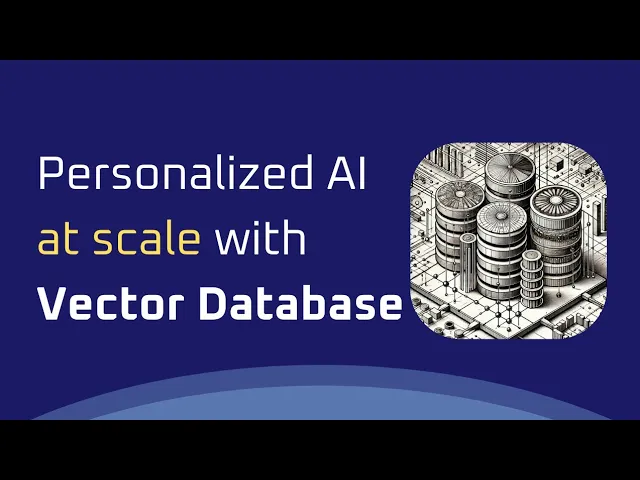Hybrid Database Solutions Combining Document Storage with Vector Search
As AI systems become more integrated with organizational knowledge bases, a powerful architectural pattern has emerged: hybrid database solutions that combine traditional document storage with vector search capabilities. This approach offers significant advantages for AI applications, simplifying architecture while expanding functionality. Understanding this hybrid approach is essential for anyone designing production-ready, document-enhanced AI systems, especially when implementing comprehensive RAG systems that require both document management and similarity search.
The Strategic Advantage of Unified Storage
Traditionally, building document-powered AI systems required managing multiple data stores – one for the original documents and metadata, and another specialized system for vector embeddings. This separation created complexity in keeping systems synchronized and maintaining data consistency.
Hybrid database solutions eliminate this complexity by unifying document storage and vector search in a single system. This integration offers several strategic advantages:
- Simplified data consistency with a single source of truth
- Reduced infrastructure complexity and maintenance overhead
- Streamlined update processes for document collections
- More straightforward development and deployment workflows
- Improved performance through reduced cross-system communication
This unified approach transforms what was previously a complex multi-system architecture into a more manageable single system that handles both traditional document access and similarity search. This architectural simplification is particularly valuable when understanding vector databases for AI engineering, as it demonstrates how modern databases can serve dual purposes.
The Dual Nature of Document Management
Hybrid database solutions recognize a fundamental truth: organizations rarely need vector search in isolation. Documents almost always require both traditional data management and similarity search capabilities.
This dual nature manifests in several important ways:
Document Metadata: Beyond their vector representations, documents typically have important attributes like creation dates, authors, categories, or status flags.
Structured Relationships: Documents often exist within organizational hierarchies or have relationships to other entities in your system.
Traditional Queries: Many use cases still require finding documents based on exact criteria rather than similarity.
Update Patterns: Documents follow typical create-read-update-delete cycles like other data in your systems.
Hybrid solutions acknowledge this reality by providing both traditional document database capabilities and vector search functionality in a unified system.
Use Cases That Benefit From Hybrid Approaches
The combination of document storage and vector search enables particularly powerful solutions for several common use cases:
Knowledge Management Systems: Organize documents hierarchically while allowing natural language search across the entire knowledge base.
Product Catalogs: Store structured product information while enabling semantic search for customer queries.
Compliance and Regulation: Maintain document versioning and audit trails while finding relevant regulatory information through similarity search.
Customer Support: Track support ticket metadata while connecting users to relevant knowledge base articles.
Research Collections: Organize research papers with traditional metadata while enabling discovery of conceptually related work.
In each case, the hybrid approach allows systems to manage the full document lifecycle while adding the power of semantic search.
Architecture Simplification
One of the most compelling benefits of hybrid solutions is architectural simplification. Instead of building and maintaining complex integrations between separate systems, hybrid databases allow developers to:
- Work with a single API for both document management and vector search
- Maintain a single security and access control model
- Implement consistent backup and disaster recovery processes
- Apply unified monitoring and observability
- Develop simpler deployment and scaling strategies
This simplification reduces both development complexity and operational overhead, accelerating implementation and improving long-term maintainability.
Considerations When Selecting Hybrid Solutions
When evaluating hybrid database solutions, several factors deserve particular attention:
Query Capabilities: The richness of the query language for combining traditional filtering with vector similarity.
Scaling Characteristics: How the system handles growth in both document count and query volume.
Update Performance: The efficiency of adding, modifying, or removing documents and their embeddings.
Management Tools: Available interfaces for monitoring, maintaining, and optimizing the database.
Ecosystem Integration: Connections to your existing data processing and analytics tools.
The ideal solution balances specialized vector search capabilities with the robustness of a mature document database, while aligning with your organization’s specific requirements and constraints.
The Evolution of Database Technology
Hybrid vector databases represent an important evolution in database technology – recognizing that AI-powered applications have unique data management needs that blend traditional and emerging requirements. As organizations increasingly build AI systems that work with their document collections, these hybrid solutions provide a foundation that aligns with both current needs and future directions.
By combining the best aspects of document databases with the power of vector search, these solutions enable more elegant architectures for document-enhanced AI systems while reducing the complexity of building and maintaining them.
To see exactly how to implement these concepts in practice, watch the full video tutorial on YouTube. I walk through each step in detail and show you the technical aspects not covered in this post. If you’re interested in learning more about AI engineering, join the AI Engineering community where we share insights, resources, and support for your journey. Turn AI from a threat into your biggest career advantage!

